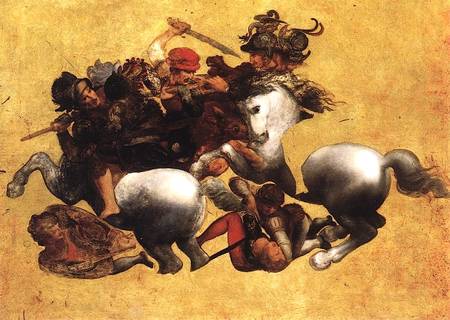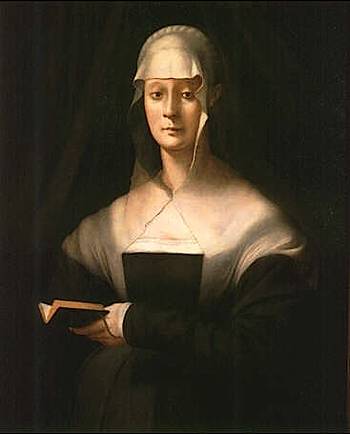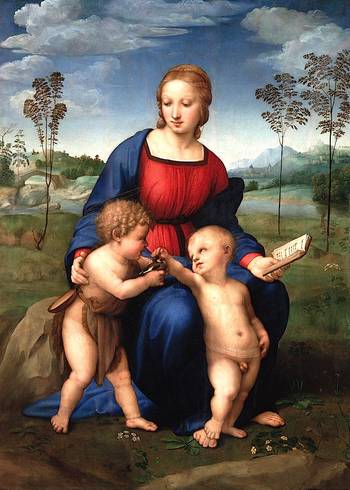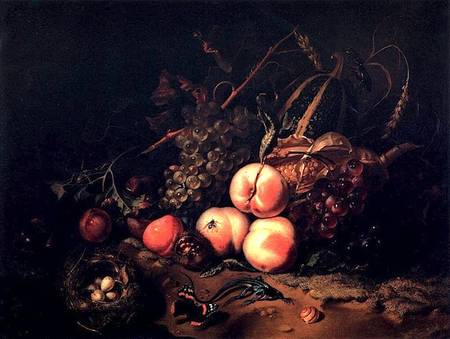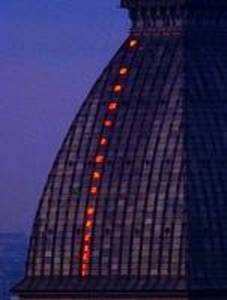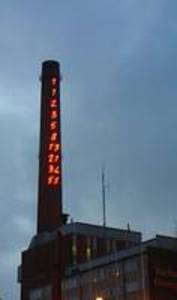Alta Macadam (author of Blue Guide Florence) paid a fascinating visit to the state restoration laboratory to see it:
Leonardo’s painting of the Adoration of the Magi, owned by the Galleria degli Uffizi in Florence and which the artist left in its preparatory state, has been removed to the state restoration laboratory in Florence’s Fortezza da Basso for restoration expected to take at least three years. Leonardo was commissioned to paint the work as the high altarpiece for San Donato a Scopeto, a church outside the city walls (no longer extant). The funds had been provided by a saddler in 1479, and it may be that Leonardo was chosen for the job since his father worked as a notary at the monastery to which the church was attached. The contract was drawn up in 1481 but just four months later Leonardo seems to have withdrawn from the agreement as he was called to Milan by Ludovico Sforza. (The monks of San Donato had Filippino Lippi paint their altarpiece 15 years later).
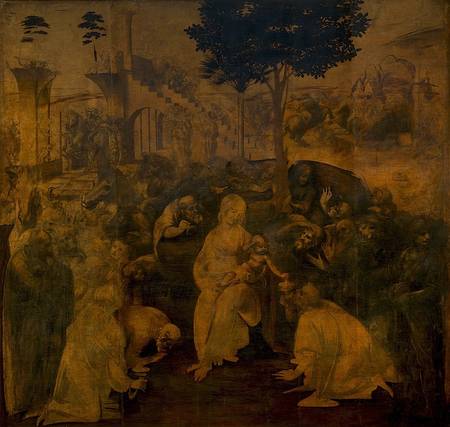
Leonardo left his work at the preparatory stage. In the extraordinary sketched details we can study the development of his ideas as he seemed to play with various designs and solutions which include over sixty figure studies, both human and animal. The iconography that he uses, turning the arrival of Christ into an extraordinarily crowded, almost exotic scene, is derived not from the biblical account but from that of a 14th-century theologian who suggested that the event provoked fright and incredulity as well as devotion. Although Leonardo made preparatory drawings for the work (which are now preserved in the Louvre, the Uffizi, and the Royal Library in Windsor), it seems that he spent much time working out his ideas on the work itself.
The preparation of the support is particularly interesting. The canvas was made from hemp stretched over ten planks of poplar wood (attached behind with metal bars, still in place) and then the ground was prepared with no less than five hands of gesso mixed with glue. Through the use of highly sophisticated apparatus, it has been established that the preliminary drawings on this ground were made by Leonardo first using charcoal, then a brush, and then indigo blue watercolour, so that there are three distinct layers of drawings. Leonardo then began to add a very little pigment, mostly ochre. As in some of his chiaroscuro paintings, it appears that he worked on the darker tones first, so that the two trees in the centre of the painting (one a palm, the symbol of Victory and the other probably an ilex, recalling the Tree of Jesse) stand out as the most finished part of the work. The sky is still white with only a few very faint touches of lapis lazuli.
Because of its unfinished state, Leonardo obviously never varnished the painting but many varnishes were added during subsequent centuries, in an attempt to unify its appearance. These later interventions have tended to reduce the overall effect to that of a monochrome painting. The work has also been subjected to several past restorations, the last of which was in 1924. Since the aim of the present restoration is to remove the varnishes added after Leonardo’s time, the end result will probably show stronger contrasts of tones but will not be spectacularly different from its present state. But we will be able to study even more closely the evolution of Leonardo’s ideas as he resolves problems as they arise and investigates the various possibilities of composition and form. The atmosphere in some parts of the work is almost chaotic, with Classical ruins, equestrian scenes, and human and animal figures closely entangled, while around the isolated majestic figure of the Madonna and the blessing Child, the Magi are shown in deeply reverent worship. The painting has many similarities in technique with Leonardo’s wonderful painting of St Jerome and the lion in the Vatican Pinacoteca, which he also left unfinished at around the same time. The format of the Adoration is unusual: it may have been slightly truncated at the bottom, so that it was probably originally exactly square.
This project is just one of many in progress at the state restoration laboratory in Florence, which is world-renowned for the excellence of its work—but sadly very much in need of funding so that more young restorers can be trained, to ensure the conservation of Italy’s art treasures in the future.







